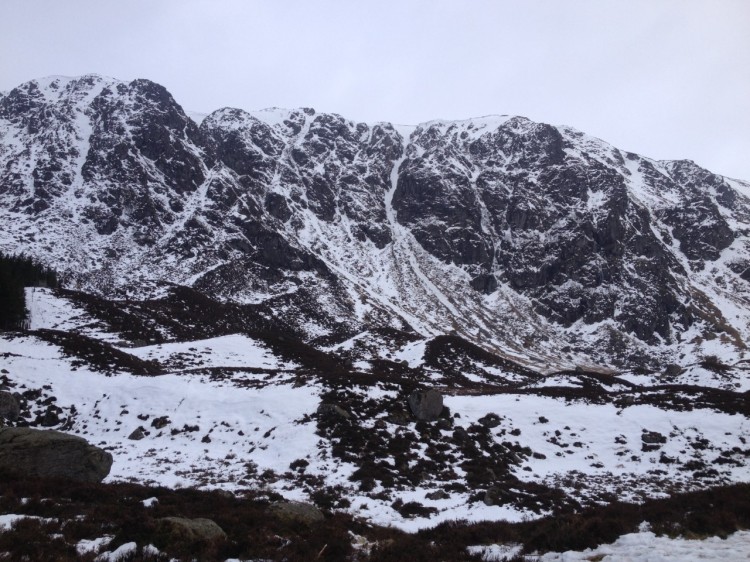Buzzard-eye views, icicles at eye level and learning new skills.
Why my first taste of winter climbing in Scotland was a kind of GetOutside relay
“Don’t look down” people always say about heights. And sometimes, as a still fairly new climber, I’ve taken a glance ground-wards and really wished I hadn’t.
But this time, part way up my first winter climb I did look. And I didn’t mind.
In fact I just grinned.
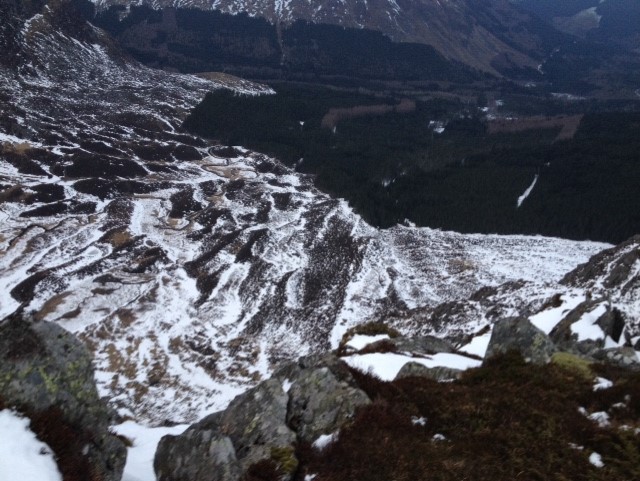
Because we were so high.
The rock cut away steeply and there far below was the valley floor.
It looked a geography text book. A river doing a loop-the-loop. Boggy patches. Clumps of trees.
It looked like a view from a plane.
But it wasn’t. It was the side of a corrie in the Cairngorms.
And we’d climbed all the way up here.

How we got there
We’d driven to the Glendoll Forest car park in Corrie Fee (OS Grid Ref: NO 284 760) and hiked for about an hour west/west-southwest. Then we headed for the foot of B Gully.
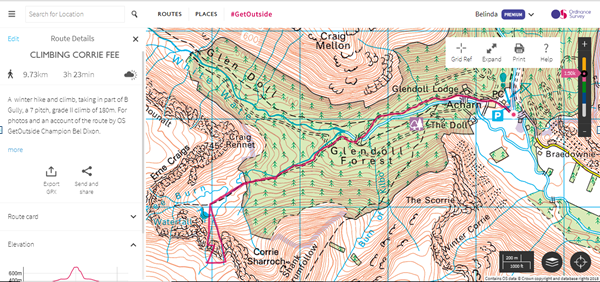
Out came crampons, climbing harnesses, helmets, ice axes, ropes and gear. As this was my first winter climb, my buddy Taff talked me through some key techniques, then he was off up the gully, leading the first of what turned out to be seven pitches.

For me it was a strange but exiting climbing experience. Mostly on snow with sections of rock and shorter stretches of ice. Instead of climbing shoes and chalk bags, this was about heavy boots and crampons gripping the snow. Hefty gloves kept getting caught in carabiner clips. This involved, effectively, making hand and footholds – jab in a crampon, thwack in an ice ace, stretch and grip with an extended, pointy metal arm.

At each pitch Taff would climb – placing gear, leading the way, setting up the rope route for me to follow. Each time as he disappeared from sight I’d become aware again of the silence, the height, the snow and the view.
I’d become aware that this was an extraordinary way to experience this environment – half way up a mountain, secured to a rope, attached to metal wedges by someone with knowledge and skill.
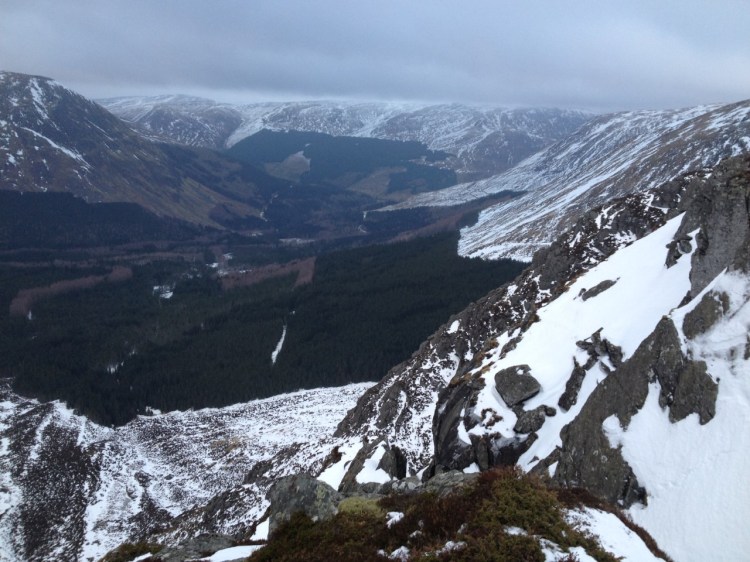
The bigger picture
As usual, on these GetOutside adventures I learned so much. How to plant ice axes in the snow to create ‘handles’, how to flip the wrist to jab the points in for a sharper grip. Using axes in ice and frozen peat, and for leverage between sections of rock. Jabbing crampons into the ice and keeping your heels down.
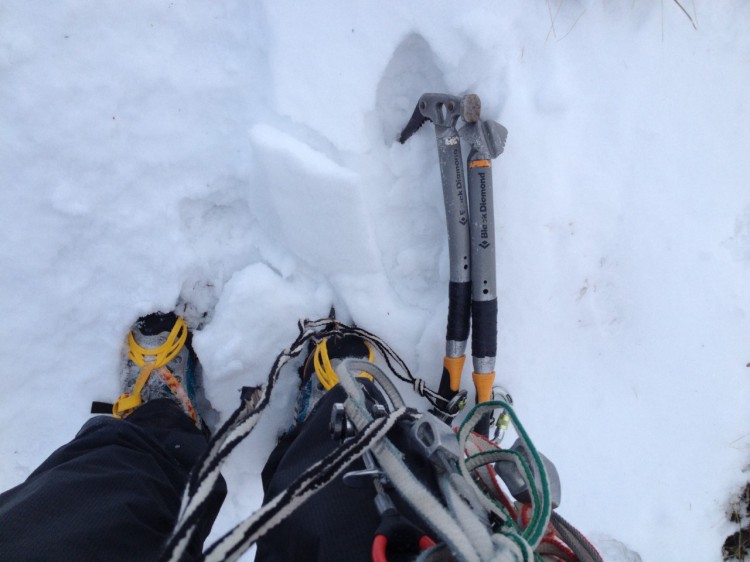
And as usual, there were broader lessons. For me a lack of fitness and finesse – I don’t get to hike hills like this that often and, when combined with being a winter climbing novice, this made me slow.
So I apologised to my buddies for slowing them down. One said no problem – that’s how it works – you can’t learn some of this stuff without getting out there. So people who’re more experienced take you out. They, literally, show you the ropes – take the time to help you because somewhere along the line, someone else will have done that for them.
It’s a kind of great GetOutside relay.
Pass it on.
The route we did was B Gully, past the bottom of B Gully chimney, then up A-B Direct. It was a 7 pitch, grade II climb of 180m.
The Ordnance Survey’s Beginner’s Guide to Climbing has more information about getting onto Britain’s crags.
The GetOutside pages are packed with inspiration and tips about other ways to explore our great outdoors.
It almost goes without saying, that attempting any of Scotland’s winter climbs is a serious business and requires the right level of kit, knowledge and skill. Make sure you have all three.
In you’re interested in winter walking, this article from fellow GetOutside Champion, Emily Thompson outlines some of the key things to bear in mind.
